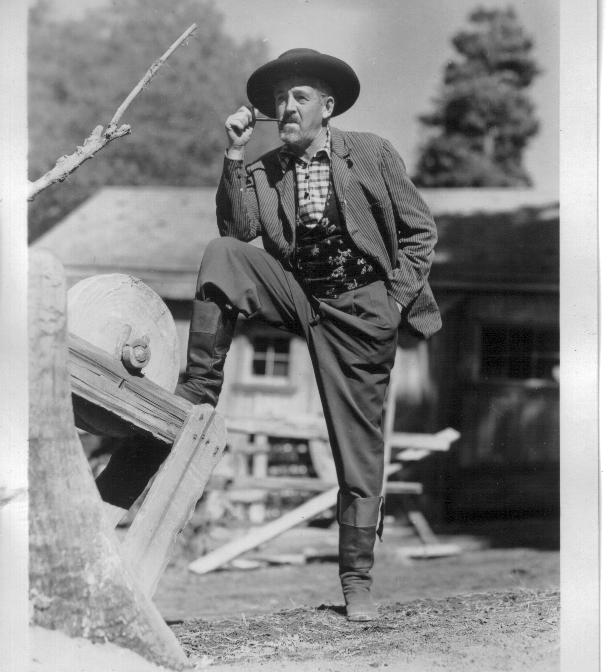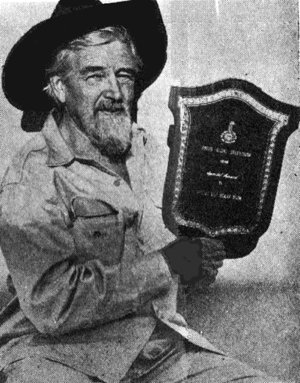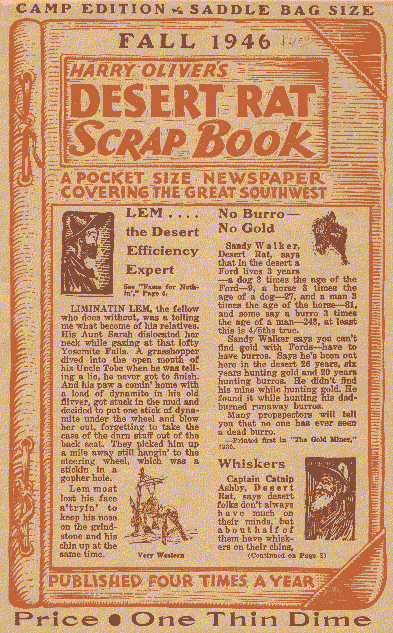Harry Oliver’s Desert Rat Scrapbook was a quirky, hand-assembled publication that ran from 1946 to 1965. Created by Oliver, a former Hollywood set designer and self-proclaimed “desert rat,” the Scrapbook was a mix of tall tales, local history, jokes, and desert lore, all presented in an old-timey, Wild West newspaper style.
Oliver published the Scrapbook from his adobe home in Thousand Palms, California, near Palm Springs. It was printed on rough, oversized newsprint and mailed out to subscribers, who were part of the informal “Lost Horse Phonygraph Club.” The content was an eccentric blend of factual history and outright fabrications, which made it both entertaining and sometimes infuriating for those trying to separate fact from fiction.
Oliver was deeply fascinated by desert culture and the people who lived in remote corners of the Southwest. His work helped popularize the image of the rugged, independent desert wanderer—part prospector, part storyteller, and part trickster. Through the Scrapbook, he connected far-flung desert enthusiasts, building a community around the shared appreciation of the oddities and legends of the region.
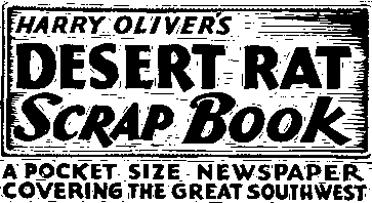
Harry Oliver’s Desert Rat Scrapbook was packed with stories that blended real history, wild exaggeration, and outright fabrications. Here are a few standout tales from his collection:
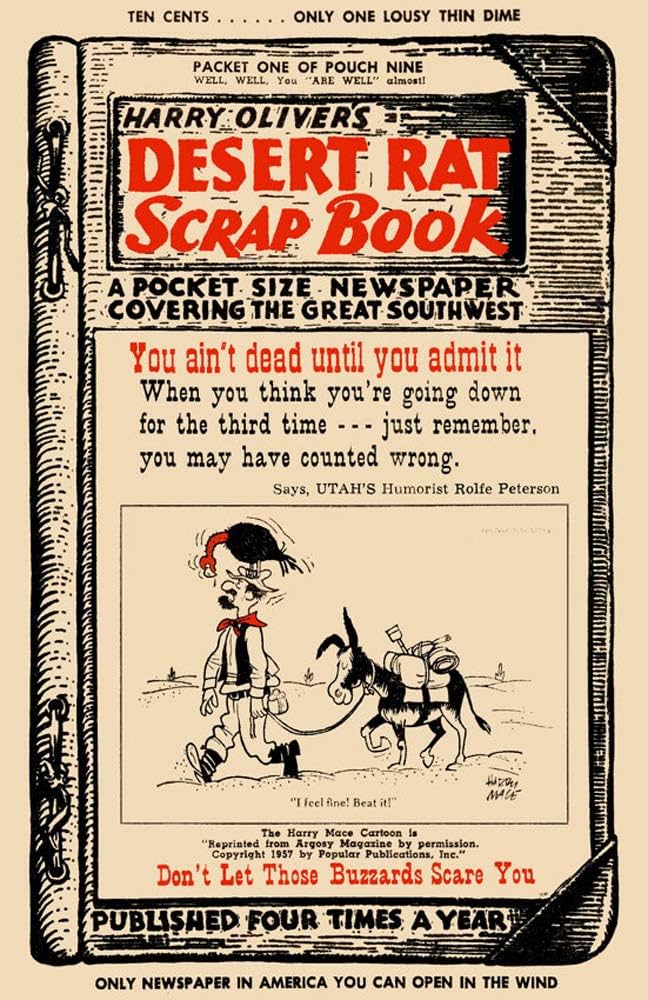
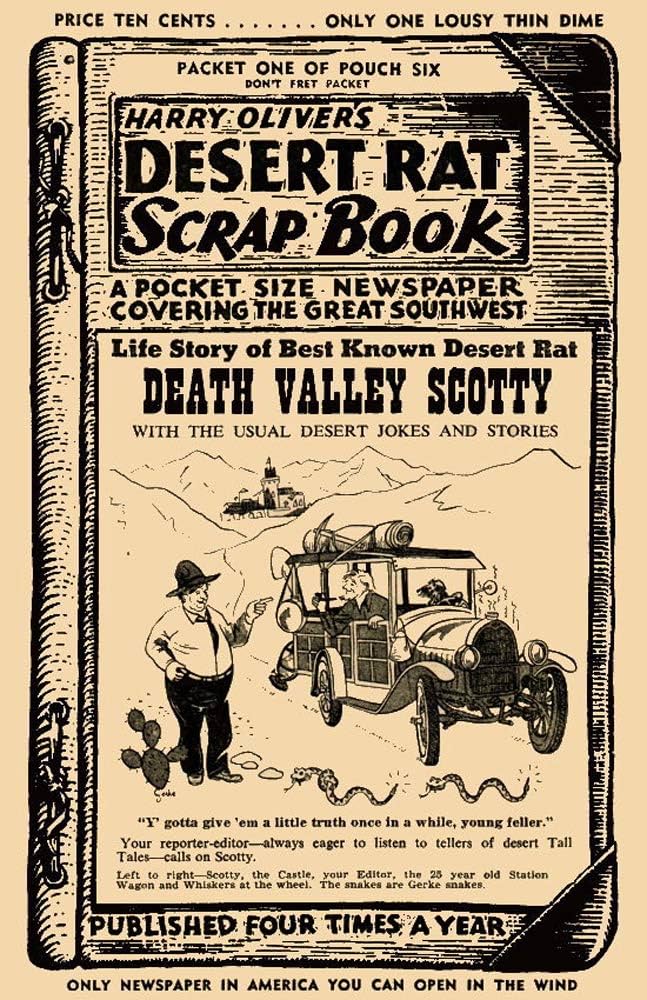
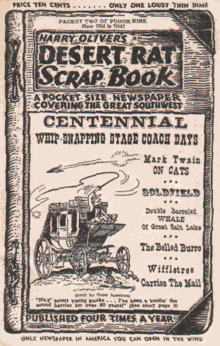
- The Lost Pegleg Mine – One of the most enduring legends in desert lore, Oliver frequently wrote about Thomas “Pegleg” Smith’s supposed gold discovery in the Colorado Desert. Pegleg allegedly found black-coated gold nuggets but could never relocate the spot. Oliver’s Scrapbook added layers to the tale, sometimes claiming new clues had surfaced or spinning yarns about hopeful prospectors who had set out on doomed quests.
- The Curse of the Lost Dutch Oven Mine – A variation of lost treasure stories, this one involved a prospector who discovered a rich mine but was killed before he could cash in. Supposedly, he buried his gold in a Dutch oven somewhere in the desert, and anyone who searched for it was met with misfortune.
- Desert Dynamite Fishing – One of Oliver’s more humorous pieces claimed that some old-timers out in the desert had perfected the art of “dry fishing” with sticks of dynamite. They’d toss a charge into a dry lake bed, wait for the explosion, and then go around picking up dazed or dead fish. Complete nonsense, but it made for a great desert tall tale.
- The Phantom Burro – Oliver often mixed ghost stories with desert humor, and this one involved a spectral burro that would lead lost travelers to safety—or, depending on the version, trick them into wandering deeper into the dunes.
- The Tin Can Mail Route – This was based on a real oddity: desert drifters and small communities that used tin cans to mark trails and leave messages. Oliver’s version exaggerated the practice, describing elaborate systems of tin can “mailboxes” where hermits and prospectors exchanged cryptic notes, treasure maps, or just empty cans.
- Jackass Mail and the Desert Post Office – He wrote about makeshift post offices set up in desert outposts where letters would be delivered by burros or left under a rock for the next traveler to take along. These informal mail systems weren’t unheard of, but Oliver took them to absurd levels, claiming they were still in use well into the 20th century.
- Lost Vikings in the Desert – Oliver had a particular fondness for weird history, and one of his pieces speculated that Norse explorers had made it to the Southwest long before the Spanish, leaving behind stone ruins and petroglyphs. While there’s no evidence for it, the story fit in well with the other strange desert myths.
- The Camels Are Still Out There – Playing off the true history of the U.S. Army’s short-lived Camel Corps experiment in the mid-1800s, Oliver spun yarns about feral camels still wandering the desert, occasionally showing up to spook travelers.
Harry Oliver knew exactly how to mix fact and fiction into something that kept readers entertained, even if they weren’t sure what was real. His Scrapbook became a kind of time capsule for desert folklore, blending the true stories of the West with the kind of campfire tales that made the region so colorful.
